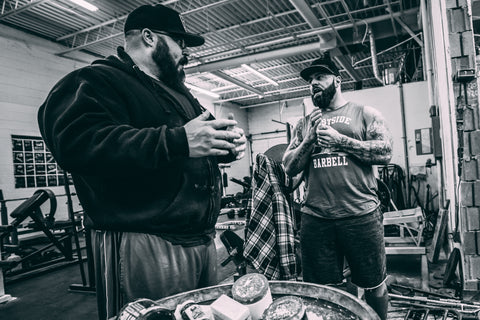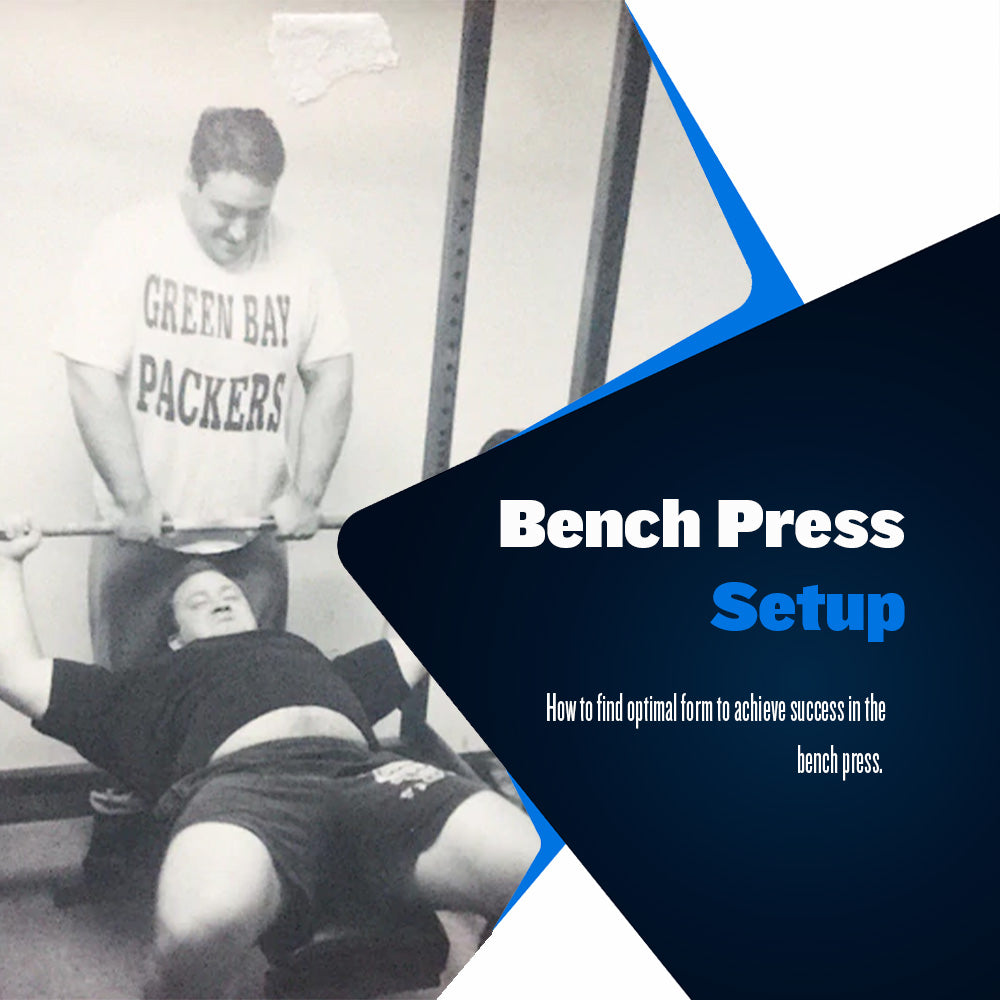Optimal Bench Press Setup

There's no doubt that you must develop optimal form and technique to lift the heaviest weights you can. Today, if you speak to practically any lifter, you will notice it is not uncommon for the average person to understand the idea that to lift your best, you must move your best.
So what qualifies as proper bench press form and technique? The truth is, it will always vary from lifter to lifter. If you are active on social media, you already know the constant emphasis on the correct form for the individual powerlifts. You'll see content discussing how to properly squat, bench, and deadlift with the promise that you will lift more and be less susceptible to injury if you follow these tips or cues.
Unfortunately, this one size fits all approach is wrong and could be holding you back from improving your technique and adding weight to your lifts. When discussing, coaching, or evaluating an athlete's form, it is important to remember that no two athletes are the same. Bone density, bone length, joint size/structure, muscle mass, and muscle fiber type are all genetically unique to the individual.
This means that the idea of a one size fits all approach to the lifts is wrong, but it can also lead to less than optimal results or injury at worst. The goal of any coach should be to provide guidelines and parameters for athletes to follow, with the idea that as long as an athlete is properly guided, they will ultimately discover their optimal form.
Below, we will discuss some guidelines and parameters regarding form we utilize at Westside Barbell when teaching the bench press.
Torso Positioning
When you first lay down on the bench, consider the circumstances. Will you be lifting off for yourself, or will someone be lifting the barbell out to you? This is important because it will determine where you need to begin setting up the torso on the bench.
Torso positioning differs depending on whether you're lifting the bar out of the rack yourself or receiving a handout. If you have a handout, you can set the torso a bit more away from the uprights; however, if you are going to lift the weight out of the rack yourself, you will need to set your torso a bit closer to the uprights.
Initial torso placement is crucial if you are performing a self lift off. Failure to position yourself correctly will unnecessarily strain your shoulders and triceps as you attempt to perform a skullcrusher while unracking your max bench press. If you are having someone hand the weight to you, you can set your torso up wherever you feel most comfortable.
Find The Arch
Once the torso has been positioned correctly, the next step is to set up an optimal bench arch. Arching the torso in the bench press is essential; an adequately executed arch reduces the distance the bar has to travel, and it will also help protect the shoulders and pecs.
There is much debate on the dangers of arching during a bench press. Determining an optimal arch for an individual depends on the torso length, size, and arm length of the lifter. Some lifters may have a more extreme arch, while some may have a less pronounced arch. There is no right or wrong; the game is optimal or suboptimal.
The most optimal form for you will be the one that reduces the travel of the barbell and helps protect the shoulders and pecs while allowing you to keep your glutes in contact with the bench. If those bases are covered, and you feel good while pressing the weight, you know you're on the right track.
Setting the arch is simple. Once you have torso positioning determined, plant your upper back in the correct position based on the style of lift off you're using. Once that is achieved, you will contact the barbell with your hands to help lift your upper back off of the bench. From that point, you will begin arching your torso while trying to drive and set your upper back/traps/neck into the bench as securely as possible.
If the arch is correct, you should feel your upper back driving directly into the bench. This alleviates any risk of sliding up the bench and flattening out when leg drive is applied.
Determine Hand Positioning
Hand positioning is another critical factor of the bench press. Similar to the other steps, this will differ depending on the lifter. The idea when positioning the hands is to place the triceps in the most optimal position during the press.
Another thing to consider when determining grip positioning is where your elbows are going. When you watch someone bench, you can see where their elbows travel in relation to the bench pad as they move the barbell. Imagine the bench pad as a line. Ideally, you want your elbows to move to the top of the pad when the barbell is on your chest.
If the elbows begin to travel below the bench pad "line," there will be added stress applied to the muscles and tendons of the shoulders and pecs. This problem is solved by coupling a proper arch with optimal hand positioning.
Arm length and arch will always determine where the elbows end up, so if you want to lower your risk of a pec or shoulder injury while benching, get your arch and hand positioning right.
Set The Feet, Lock-In
When setting up a bench press, the final step is to set the feet. How you place your feet should be based on what is best for you. However, it may be dictated by the federation in which you compete. If you compete in a federation that requires flat feet while benching, you have no choice but to train the bench while pressing with flat feet.
For those of you lifting in federations that allow the feet to be set however you'd like, we recommend setting up on the balls of your feet. When setting the feet, you will ultimately need to reset the rest of your setup. However, considering you have already figured out where you need to be, the reset should be easy.
We reset once we have our feet set because we want to create as much tension from our feet to our upper back as possible. The reset isn't drastic; we want to reset the upper back and potentially increase the torso arch to get as much drive from the feet to the upper back as possible.
Once the feet are set, and the upper back has been slightly repositioned, it is time to take in air and expand the diaphragm to become as stable as possible for the press. A great way to help create this pressure is with the help of a lifting belt. However, some find benching with a belt disruptive to their setup.
Guidelines Over Rules
At Westside, we have long understood that for a lifter to perform at their best, they need to discover what works best for them. Attempting to fit every lifter you work with into the same movement patterns is ultimately a disservice to every lifter following your guidance.
The approach should be to provide guidelines and parameters for lifters to follow to find what feels most optimal to them. Truthfully, lifters should accomplish this within the first three months of barbell training. After that, the problem becomes addressing involved muscle group weaknesses that force a lifter out of optimal position.
If you have been training for a few years and still don't know how to properly squat, bench, or deadlift without risking catastrophic injury, you need to find a new coach. Whether you just started training or have been training for a while and still struggle with bench form, the suggestions described above will help get you on the right track.
Don't fall into the trap of one size fits all form solutions; optimal form will look different from lifter to lifter. Find yours and watch your total increase rapidly.
Sources:
Simmons, L. (2007). Westside Barbell Book of Methods. Westside Barbell.
Verkhoshansky, Y., & Siff, M. C. (2009). Supertraining. Verkhoshansky.
Zatsiorsky, V. M., & Kraemer, W. J. (2006). Science and Practice of Strength Training. Human Kinetics.





